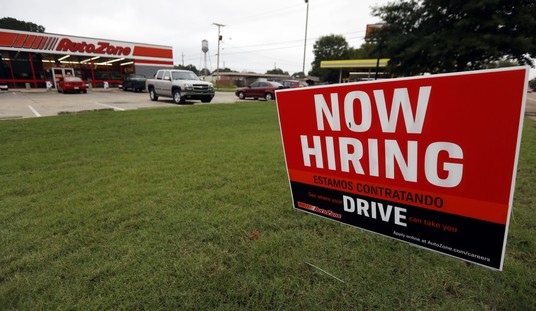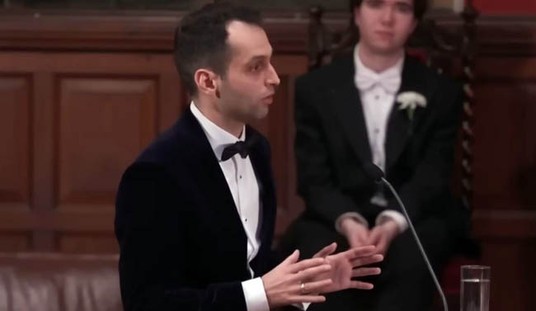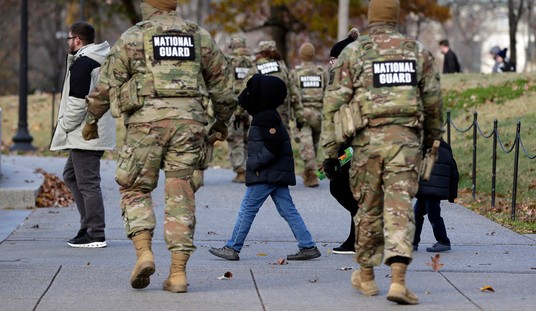I live in a blue metro area that was wracked by crime in 2020 - not just the big flashy (literally) riots that burned neighborhoods (including mine), but a surge in carjacking and homicide. In 2016, Minneapolis was one of the safest major cities in the country, and Minnesota among the safest states per capita, with about 90 homicides statewide. By 2021, Minneapolis alone - with 8% of the state's population - had 90 homicides all by itself.
But Minneapolis boosters, like boosters of blue cities around the country, have been doing a victory lap over purported reductions in crime.
It was even a point during last year's presidential debate:
During last year’s presidential debate between Donald Trump and Kamala Harris, Trump said violent crime was rising. ABC moderator David Muir immediately fact-checked him, claiming, “President Trump, as you know, the FBI says overall violent crime is coming down in this country…”
And that was certainly the chanting point last year, as the Presidential election loomed. Example: NPR got in on the act, under the spectacularly gaslight-y headline "Violent crime is dropping fast in the U.S. — even if Americans don't believe it":
In cities big and small, from both coasts, violence has dropped.
"The national picture shows that murder is falling. We have data from over 200 cities showing a 12.2% decline ... in 2023 relative to 2022," Asher said, citing his own analysis of public data. He found instances of rape, robbery and aggravated assault were all down too.
Yet when you ask people about crime in the country, the perception is it's getting a lot worse.
And over the summer, when President Trump started sending the National Guard into cities to fighrt crime, we were assured - usually by white progressives in gentrified neighborhoods, showing photos of families romping through well-tended parks in neighborhoods where gunshots are as rare as MAGA hats:
Trump has called the National Guard to D.C. “Our capital city has been overtaken by violent gangs and bloodthirsty criminals, roving mobs of wild youth, drugged out maniacs and homeless people.”
The DC crime rate is at a 30-year low.#TrumpIsUnfitForOffice #TrumpEpsteinCoverup pic.twitter.com/8lSY63D58G
Trump has called the National Guard to D.C. “Our capital city has been overtaken by violent gangs and bloodthirsty criminals, roving mobs of wild youth, drugged out maniacs and homeless people.”
— LA Blue Dot in GA 🌊💔 (@namwella1961) August 11, 2025
The DC crime rate is at a 30-year low.#TrumpIsUnfitForOffice #TrumpEpsteinCoverup pic.twitter.com/8lSY63D58G
"There's never been crime in Oceania, Winston".
Problem is, there's more than one way to measure crime - and while one shows that crime is down, the other shows quite another story:
The federal government tracks crime in two main ways. The FBI’s Uniform Crime Reports count the number of offenses reported to police each year. The Bureau of Justice Statistics’ National Crime Victimization Survey, by contrast, annually asks about 240,000 people living in the United States whether they were crime victims. The latter method captures both reported and unreported incidents.
Last year, the media focused almost entirely on the FBI data.
Before 2020, the FBI and Bureau of Justice Statistics trends generally moved in tandem. Since then, they’ve diverged sharply: The FBI reports fewer crimes, while more Americans say they’ve been victimized. Unreported crime was always a factor – and the reasons for it vary. They range from people reluctant to report being victimized by loved ones to a simple aversion by undocumented people to involve themselves with the criminal justice system. In recent years, however, another factor appears to have skewed the FBI data: the breakdown of law enforcement in this country. When people believe police won’t catch or prosecutors won’t punish criminals, they’re simply less likely to report crimes. Between 2010 and 2019, victims reported 63.3% of violent crimes to police. In the last three years, that number plummeted to 48.8%. Arrests fell as well – from 26.5% before COVID-19 to just 16.6% afterward.
So when you control for all of that?
It'd seem Trump may have been onto something in that debate:
In 2024, the rate of violent victimization in the United States was 23.3 victimizations per 1,000 persons age 12 or older (figure 1). This rate was higher than the rate in 2020 (16.4 per 1,000 persons) and 2021 (16.5 per 1,000 persons) and was similar to the rate in 2022 and 2023. Violent victimization includes rape or sexual assault, robbery, aggravated assault, and simple assault. The rate of violent victimization reported to police followed a similar trend.
But then you are you going to believe - JB Pritzker, or your lying eyes?









